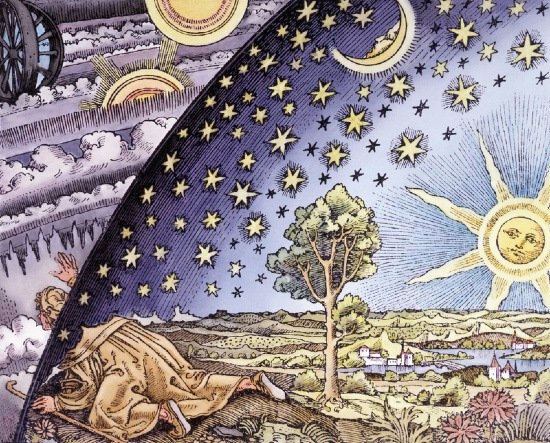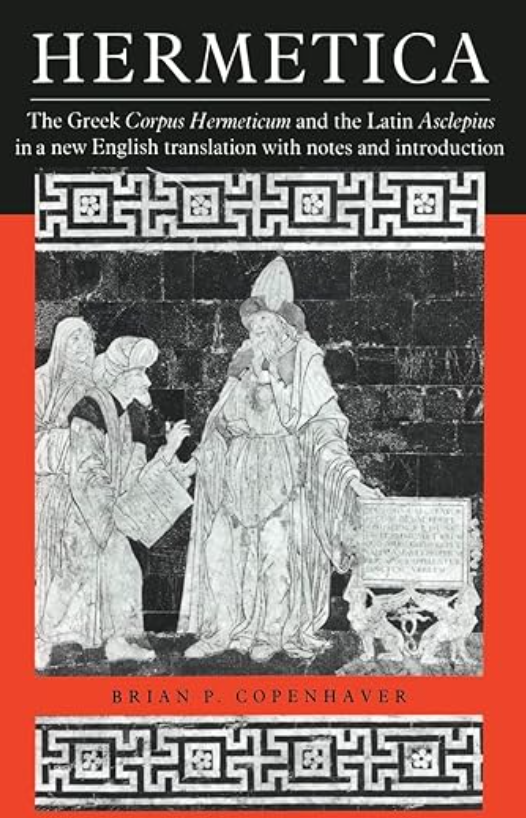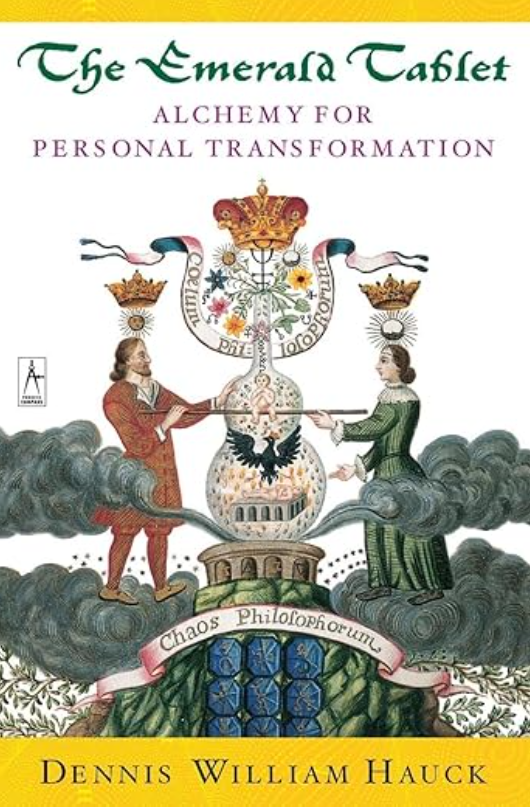
Hermeticism FAQs
Hermeticism vs Sufism?
The Path of Knowledge or the Path of Love
Hermeticism and Sufism are two rich, esoteric traditions that guide the seeker toward divine union. One emerged in the temples and academies of the ancient Western world; the other in the heart of Islamic spirituality. One teaches mastery through universal law and symbolic understanding. The other invites surrender into the burning heart of divine love.
Each speaks to the soul’s longing in a different dialect—but both point toward the same truth: you are not separate from the Source.
-
An ancient spiritual philosophy from Egypt and Greece
Based on texts like the Corpus Hermeticum and The Kybalion
Teaches that the universe is mental and governed by 7 universal laws
Emphasizes self-mastery, symbolic understanding, and alignment with cosmic law
-
The mystical dimension of Islam, emerging in the 8th–9th centuries CE
Rooted in the Quran but transcending formal doctrine through poetry, music, and embodied love
Teaches that the soul is separated from the Beloved (God) and must return through purification, devotion, and remembrance (dhikr)
Often transmitted through spiritual orders (tariqas) with living teachers and initiatory guidance
Historical Context of Hermeticism and Sufism
Hermeticism and Sufism emerged from entirely different civilizations—separated by geography, language, and religion. Yet both evolved as inner paths within broader spiritual worlds, offering initiates and mystics a deeper, more personal way to know the Divine. Each tradition formed in response to a cultural moment in which external forms of religion could no longer satisfy the soul’s longing.
These two lineages are like twin rivers: one flowing from the intellectual temples of Alexandria, the other from the devotional heartlands of the Islamic world. Both carried secret knowledge, poetic ecstasy, and practical techniques for transforming the self and reuniting with the Source.
Hermeticism: The Western Mystery Tradition
Hermeticism arose during the first few centuries CE in Hellenistic Egypt, especially in the cosmopolitan city of Alexandria. This was a place where ancient Egyptian temple wisdom met Greek philosophical inquiry, Jewish mysticism, and Babylonian astrology. In this spiritually charged environment, the Corpus Hermeticum and other texts attributed to Hermes Trismegistus were written.
Hermes Trismegistus (the "Thrice-Great") was seen as a divine philosopher-sage—a fusion of Thoth (Egyptian god of wisdom) and Hermes (Greek god of communication, magick, and movement). The Hermetic texts spoke not only of philosophy and cosmology but of inner transformation, the ascent of the soul, and the hidden laws that govern creation.
Hermeticism was not a mass religion. It was initiatory, symbolic, and esoteric—often practiced in private by mystics, philosophers, alchemists, and magicians. After a long period of suppression by orthodox Christianity, it resurfaced during the European Renaissance, inspiring thinkers like Marsilio Ficino, Giordano Bruno, and later esoteric movements such as Rosicrucianism, Alchemy, and the Hermetic Order of the Golden Dawn.
Sufism: The Heart of Islam
Sufism arose in the 8th to 10th centuries CE, in the spiritual and cultural heartlands of the Islamic empire—Persia, Iraq, North Africa, and later Turkey, India, and beyond. It was born not in opposition to Islam, but as its inner dimension—focused not on external law (shari‘a) but on inner truth (haqiqa) and divine intimacy.
Sufis were moved by the Qur’an’s language of beauty, awe, and nearness to God. They saw the path not only as obedience but as transformation—through love (maḥabba), remembrance (dhikr), and direct experience (ma‘rifa).
The early Sufis were often ascetics and wanderers. But over time, Sufism developed structured orders (tariqas), often passed through living teachers (sheikhs) in chains of transmission (silsilah). Their methods included:
chanting and breathwork
poetry and music
guided inner practices and initiations
paradox and ecstatic states
Famous Sufi saints like Rumi, Hafiz, Ibn Arabi, Al-Ghazali, and Rabia al-Adawiyya left behind writings that transcended theology and culture—speaking to the universal longing of the soul to dissolve in divine presence.
Despite political and religious pressure (and even persecution), Sufism persisted as a mystical flame within Islam, offering ordinary people a path to extraordinary union.
Hidden Wisdom, Common Ground
What Hermeticism and Sufism share is not doctrine, but function. Both serve as:
Inner paths of transformation within larger spiritual systems (paganism/philosophy and Islam)
Esoteric lineages that preserve sacred knowledge and offer direct experience of the Divine
Traditions that use symbol, practice, poetry, and initiation to awaken the seeker
Where Hermeticism speaks of the All and the unfolding of universal law, Sufism speaks of the Beloved and the annihilation of the self. But both point toward the great return—the soul’s journey back to its source, not through belief alone, but through embodied knowing.
In our modern era, as more seekers look beyond surface spirituality, these traditions meet again—offering the tools, heart, and vision to reunite the sacred mind and the sacred heart.
Key Comparisons of Hermeticism vs. Hinduism
Knowledge vs. Love as the Primary Vehicle
Hermeticism emphasizes gnosis—direct inner knowledge of divine laws and principles.
Sufism emphasizes maḥabba—divine love and longing as the fire that purifies the soul.
Cosmic Law vs. Divine Yearning
Hermeticism teaches the soul to ascend by mastering the laws of nature (e.g., Cause and Effect, Polarity, Vibration).
Sufism teaches the soul to melt in ecstatic remembrance—"Die before you die"—dissolving the self in God’s presence.
Symbolism vs. Embodied Devotion
Hermeticism uses geometry, planets, elements, and sacred correspondences to understand reality.
Sufism uses poetry, breath, music, and spiritual companionship to feel reality from the inside out.
Structure of the Universe
Hermeticism maps existence through levels (mental, astral, physical), aiming to ascend through purification and inner work.
Sufism speaks of stations and states on the journey to God (maqām and ḥāl), ending in annihilation (fanā) and subsistence in the Divine (baqā').
Approach to the Divine
Hermeticism engages with “The All,” often impersonal, approached through symbol, ritual, and meditation.
Sufism relates to God as the Beloved—intimate, passionate, and overwhelming in beauty.
Key Similarities of Hermeticism vs. Hinduism
The World as a Symbol
Hermeticism teaches “As above, so below”—the material world reflects the unseen.
Sufis see every event as a divine sign (āyah)—everything is a mirror of the One.
Inner Purification as Essential
Both paths require purifying the ego/self (Hermetic: transmutation; Sufi: nafs purification).
Both guide the seeker through stages of refinement and increasing light.
Direct Experience Over Dogma
Hermeticism encourages direct perception of spiritual truth through practice and reflection.
Sufism values personal union with the Divine above theology or external rituals.
Initiatory Lineage and Transmission
Hermetic teachings have often been preserved through secret or initiatory schools.
Sufi teachings are passed through spiritual chains (silsilah) with guides who carry the transmission of presence.
Why Study Both?
Hermeticism offers the map; Sufism offers the fire. One helps you understand the nature of creation; the other invites you to fall into it and be transformed.
Studying both helps you:
Integrate mind and heart on the spiritual path
Recognize the sacred in all things—whether symbol or song
Deepen your discernment between structured knowledge and surrendered love
You don’t have to choose between them. In fact, together they remind us that divine union is both science and surrender, geometry and poetry. The All contains everything—even longing.
Recommended Texts for Students of Hermeticism
-

Corpus Hermeticum
A collection of dialogues between Hermes and his disciples, covering topics such as the nature of the divine, the creation of the universe, and the path to spiritual enlightenment. It explores the relationship between the divine mind and human consciousness, offering a path toward spiritual awakening.
-

Emerald Tablet
A cryptic and poetic text that contains some of the most famous Hermetic aphorisms, including "As above, so below." This phrase encapsulates the Hermetic belief in the interconnectedness of all things and the idea that the microcosm (human experience) reflects the macrocosm (the universe).
-

The Kybalion
This text presents the foundational teachings of Hermetic philosophy. It outlines the 7 universal principles that govern the nature of reality, providing insight into the workings of the universe with practical guidance for spiritual growth, self-mastery, and understanding the deeper truths of existence.
🔍 Explore More Esoteric Comparisons
Curious how Hermetic thought compares to other spiritual traditions? Continue your journey of discovery:
What Is Hermeticism? (Beginner’s Guide) →
Hermeticism vs Christian Mysticism →
Hermeticism vs Law of Attraction →
Note: Spiritual exploration of various thought systems isn’t to decide which one is “better” or more correct—it’s to expand your lens. Each tradition offers a unique language for describing the journey of the soul, the structure of the universe, and the human potential for awakening.
In true Hermetic fashion, learning from multiple wisdom traditions is a path to greater discernment, wholeness, and integration. Let these teachings be mirrors, not rules—tools that help you clarify your own experience of the divine.
Study with an Authentic Hermetic Lineage…
The tools, healings and secrets of the ancient mystery school traditions were once veiled, known only to the privileged elite—royalty, artists, scholars.
In these remarkable times, the doors are now open to the public, with wisdom unveiled for all who seek to take the journey on the path of self-mastery that has illuminated the minds of history's brightest souls…
Leonardo DiVinci, Nicola Tesla, David Bowie… These are just some of the remarkable people who studied in the mystery school tradition.
Are you ready?

